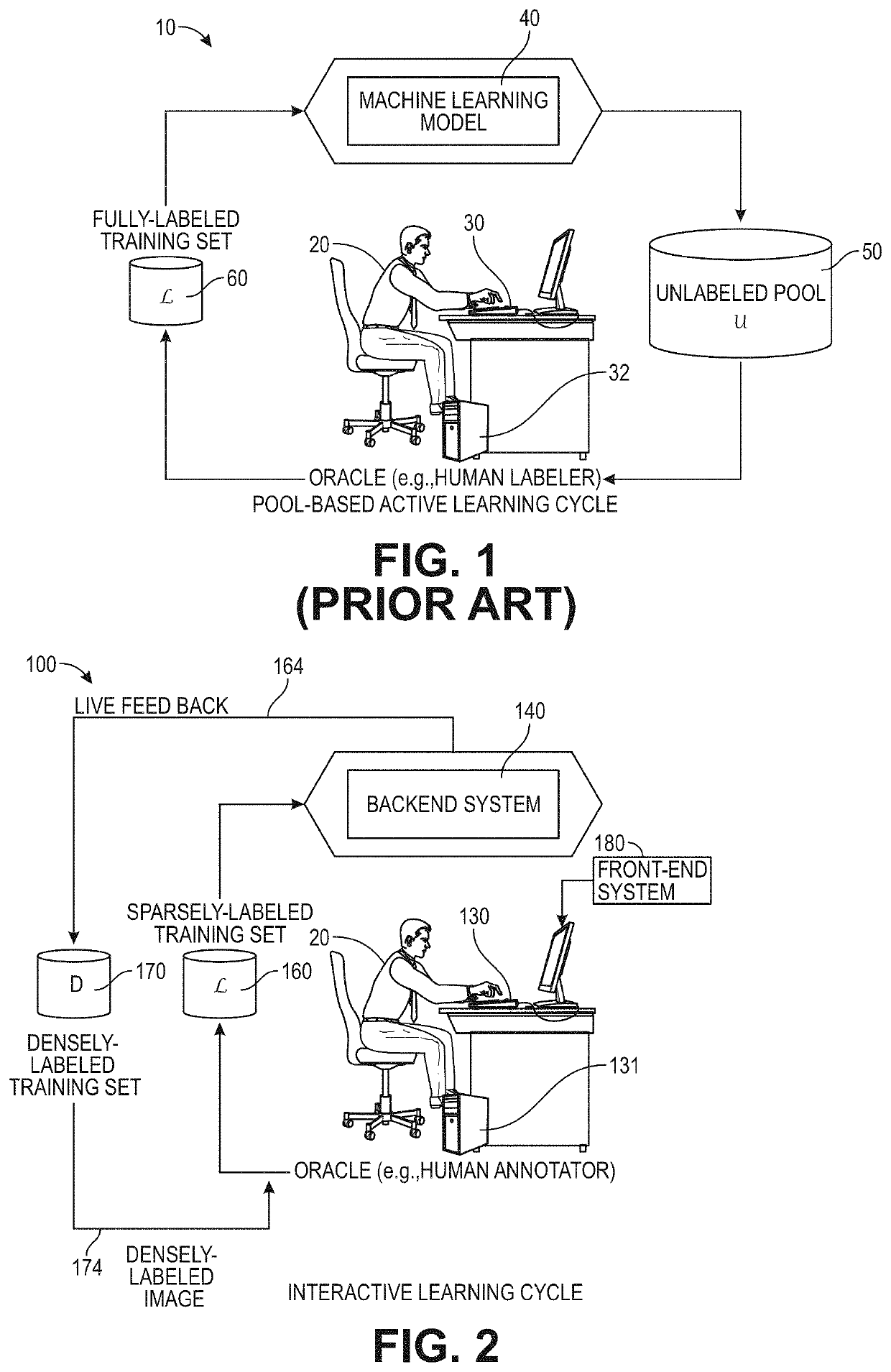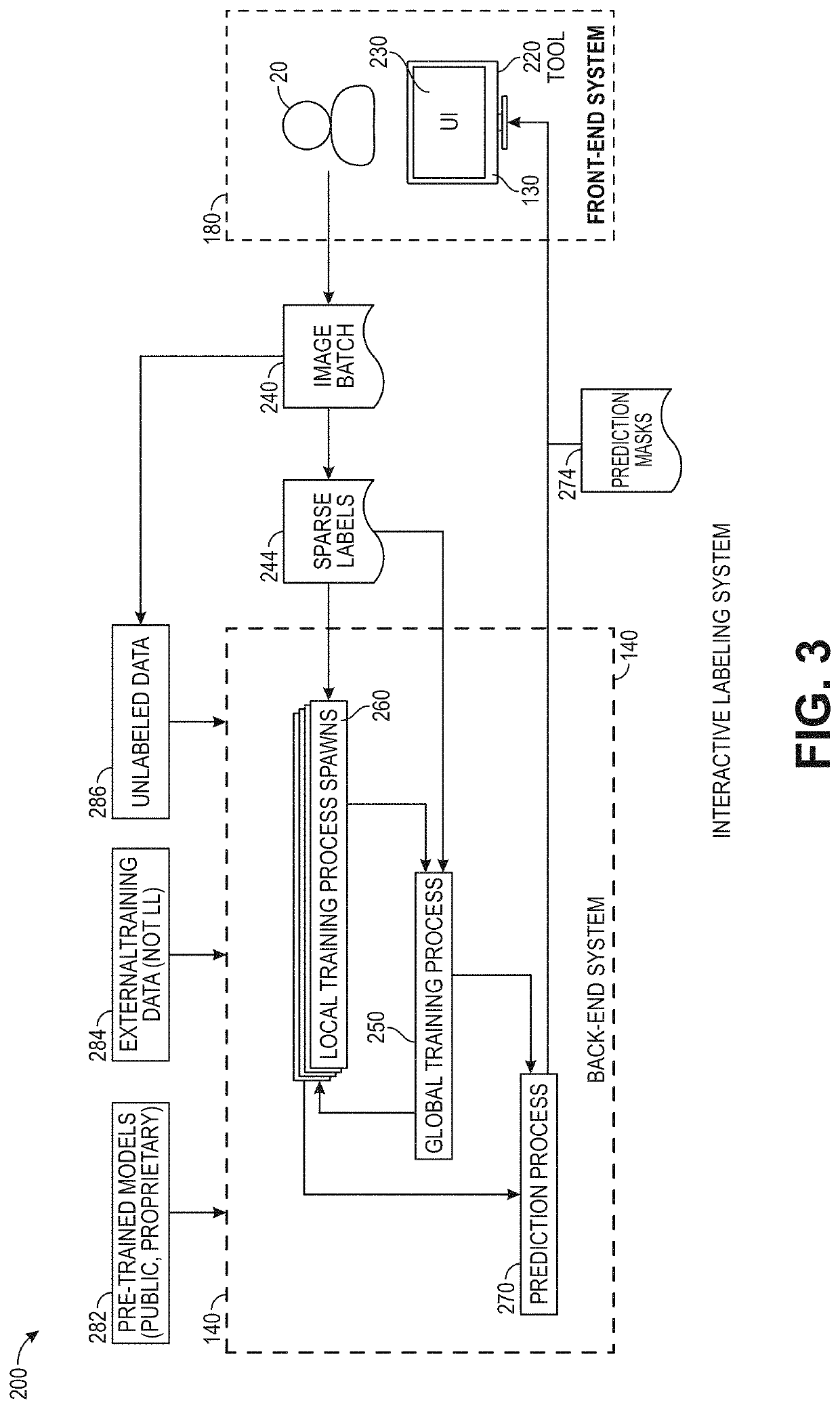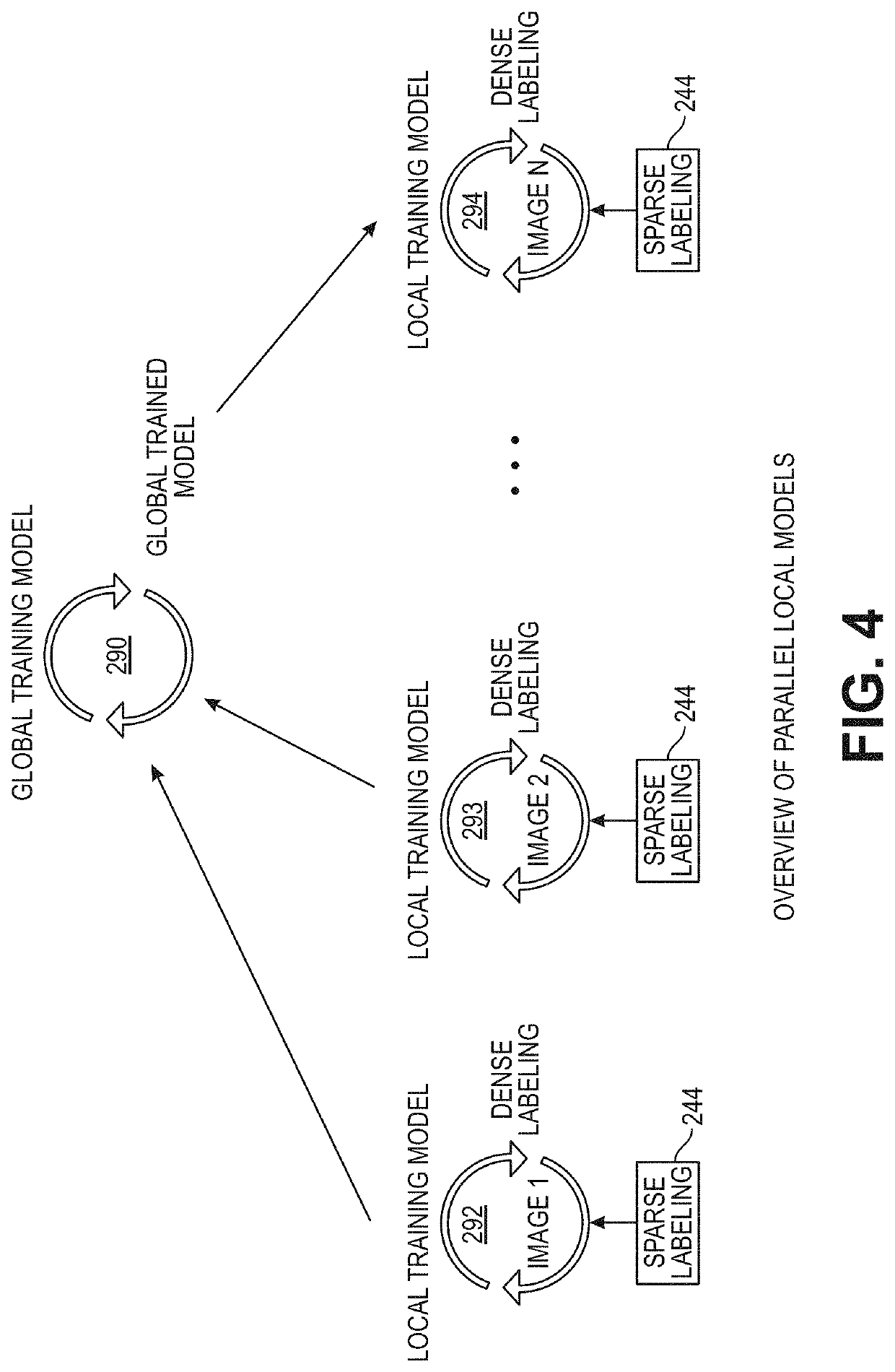Visual image annotation utilizing machine learning for in-time feedback
a technology of visual image and in-time feedback, applied in the field of interactive learning, can solve the problems of difficult to obtain labeled training data, slow and expensive creation by manual annotation, and difficulty in obtaining labeled training data, and achieve the effect of high-quality training material
- Summary
- Abstract
- Description
- Claims
- Application Information
AI Technical Summary
Benefits of technology
Problems solved by technology
Method used
Image
Examples
Embodiment Construction
[0067]Embodiments of the invention include these innovations and advantages. A human operator provides sparse labels via a labeling mask over an image and feeds the annotated image of sparse labels into a back-end system; a ML process then provides predicted dense labeling (in the form of an output mask) based on the human's sparse labels. The human operator and the back-end system of a labeling tool are in a constant feedback loop via the operator input labeling mask and the output prediction mask; this increases the accuracy and quality of the output. The visualization of the ML predictions is observed by the operator in the output prediction mask within a few seconds. The output are accurate dense labeling masks for a chosen ML training project.
[0068]The back-end system itself incorporates a feedback loop between the global and local models that boosts the overall performance of the back-end system. Also, the spawning of local models may occur in parallel. The local and global mo...
PUM
 Login to View More
Login to View More Abstract
Description
Claims
Application Information
 Login to View More
Login to View More - R&D
- Intellectual Property
- Life Sciences
- Materials
- Tech Scout
- Unparalleled Data Quality
- Higher Quality Content
- 60% Fewer Hallucinations
Browse by: Latest US Patents, China's latest patents, Technical Efficacy Thesaurus, Application Domain, Technology Topic, Popular Technical Reports.
© 2025 PatSnap. All rights reserved.Legal|Privacy policy|Modern Slavery Act Transparency Statement|Sitemap|About US| Contact US: help@patsnap.com



